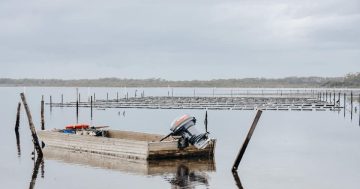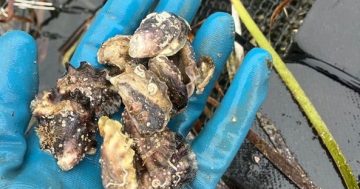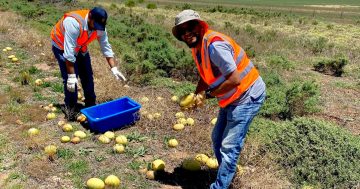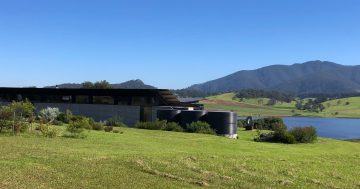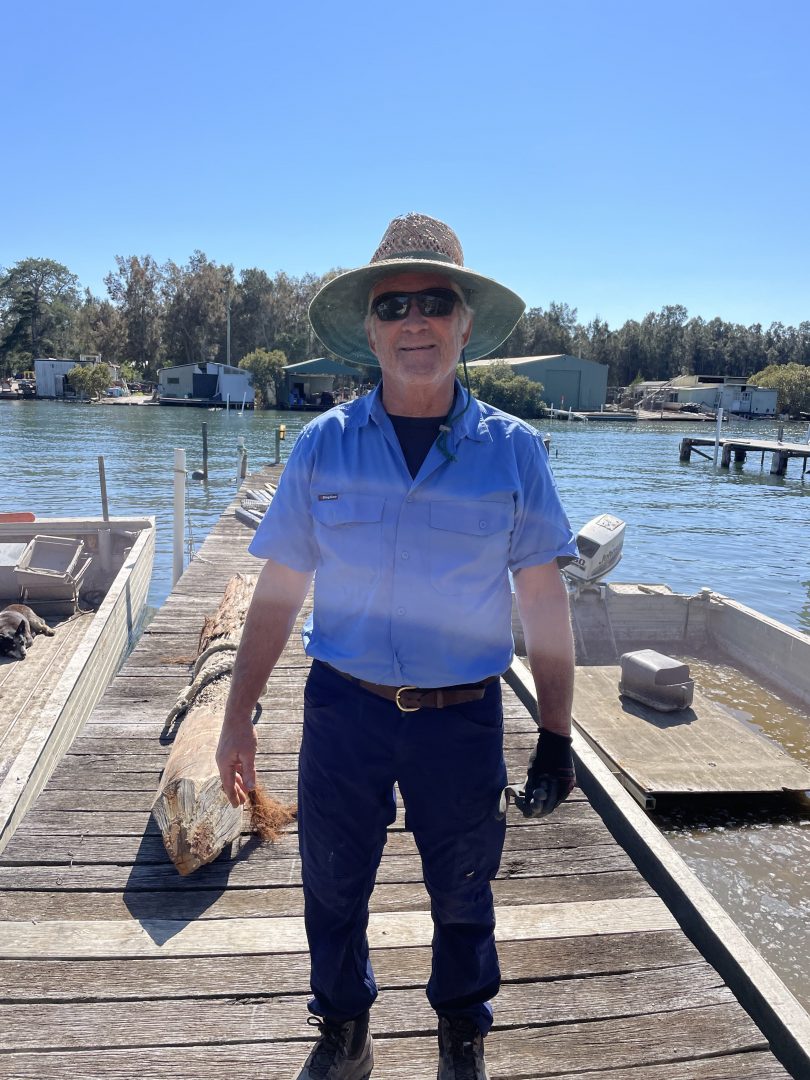
Kevin McAsh, owner of McAsh Oysters. Photo: Tom McGann.
McAsh Oysters on the South Coast are preparing for a boom in sales when NSW opens next month with new technology allowing them to harvest oysters more efficiently.
The family-owned business is utilising new FlipFarm technology that originated in New Zealand.
The semi-automated system allows them to harvest oysters more efficiently with less human labour.
Oyster farmer at McAsh Oysters, Jamie Buchan says the new system is far better than traditional harvesting methods.
“It still requires personnel to run it,” he said. “But it’s a lot physically easier, faster and more efficient.”
The FlipFarm system works by connecting the farm to the boat as it drives along, the baskets of oysters are automatically flipped over. The baskets then sit out of the water for three days in order for the oysters to dry.
Once dry, they must be handled and taken to the shed for grading in the visual grading machine.
Oysters must be handled and graded once every four months with the growth cycle for Sydney Rock Oysters being two and half to three years.
Currently, McAsh Oysters have about 412,000 Sydney Rock Oysters under cultivation in the Clyde River.
“It’s a lot of oysters to handle,” Mr Buchan said. “Any efficiency improvements make a big difference.”
The harvest and grading process is completed in the shed using a high-tech visual grading machine.
The machine grades the quality of the oysters using a camera system that separates them based on their size, dropping them into their corresponding bins with compressed air jets out of a chute.
The shed is where the farmers complete most of their day-to-day work, running the machinery and grading the oysters.
“We use this machine primarily for grading oysters for wholesale,” Mr Buchan said.
“But you can use it for routine oyster grades too.”

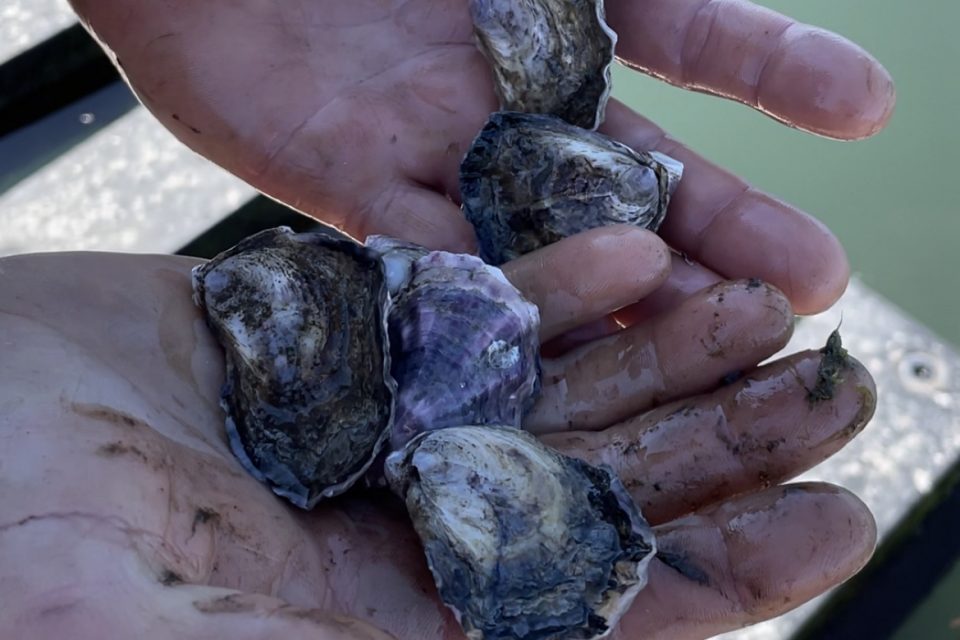

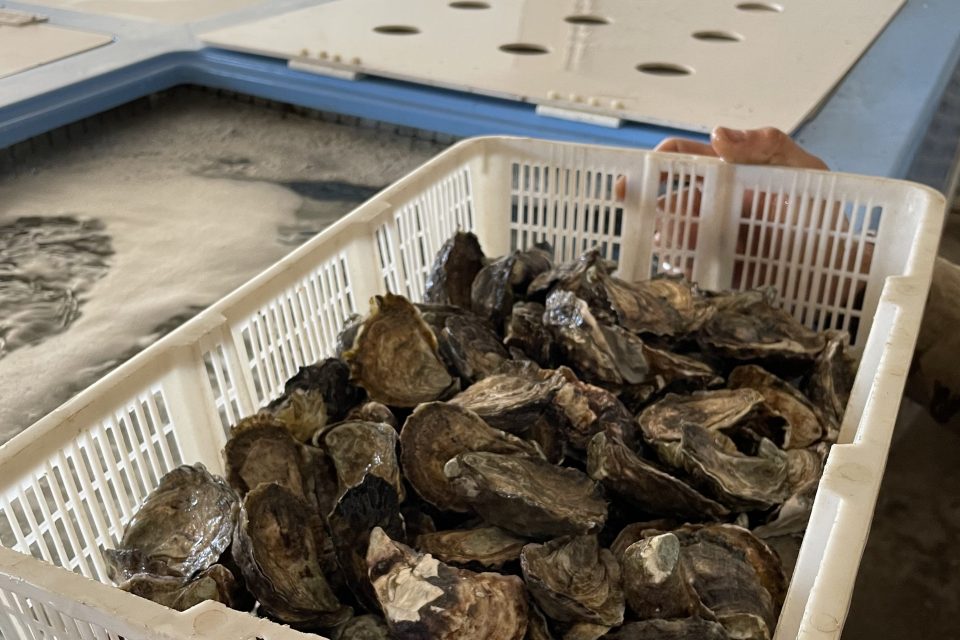
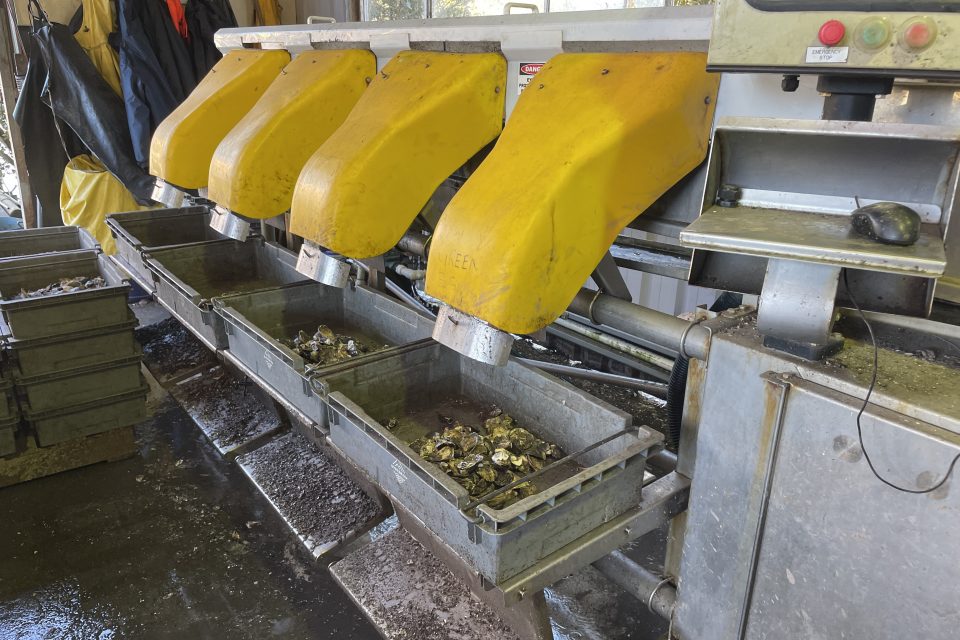
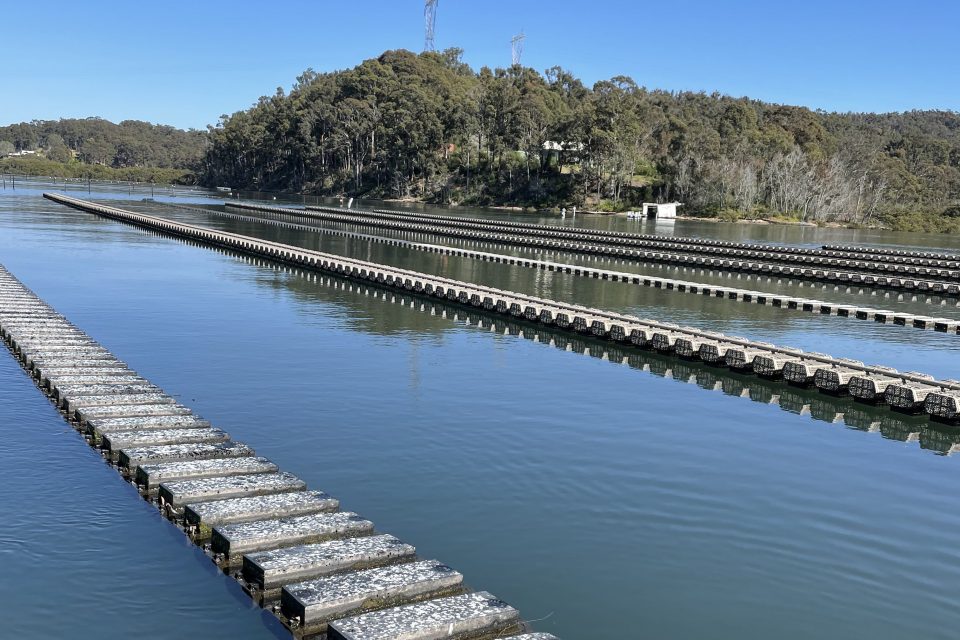
Live storage tanks are also an important part of the harvesting process.
Owner of McAsh Oysters, Kevin McAsh, says that the tanks are important to keep supplying to the market no matter the weather.
After rain, harvesting in rivers must stop due to the water becoming dirty with debris from the weather.
When harvesting in the river is halted due to weather, in order for the business to continue functioning, live storage tanks filled with river water are kept in sheds with oysters, allowing grading and sales to continue.
Mr Buchan said that the tanks are maintained at a constant 12 degrees, keeping the oysters in a hibernation state.
“The tanks are highly oxygenated,” he said.
“They can remain in those tanks for up to three months and they can also be directly packed for consumers out of those tanks.”
Mr McAsh said that due to the lockdown, sales have been slower than usual.
“Our markets have just collapsed with restaurants closed,” he said.
However, with the lockdown set to end early in October when the 70 per cent fully vaccinated figure is reached, Mr McAsh believes that sales are going to skyrocket and there will be a large demand for oysters.
“If we open in October, sales are going to go nuts,” he said.
“People from Sydney who have been locked up are going to travel to the South Coast and they are going to want to hit the restaurants.”
Fortunately for McAsh Oysters, the new FlipFarm system and grading technology will allow them to keep up with the sudden increase in demand.
You can visit McAsh Oysters’ website here.







